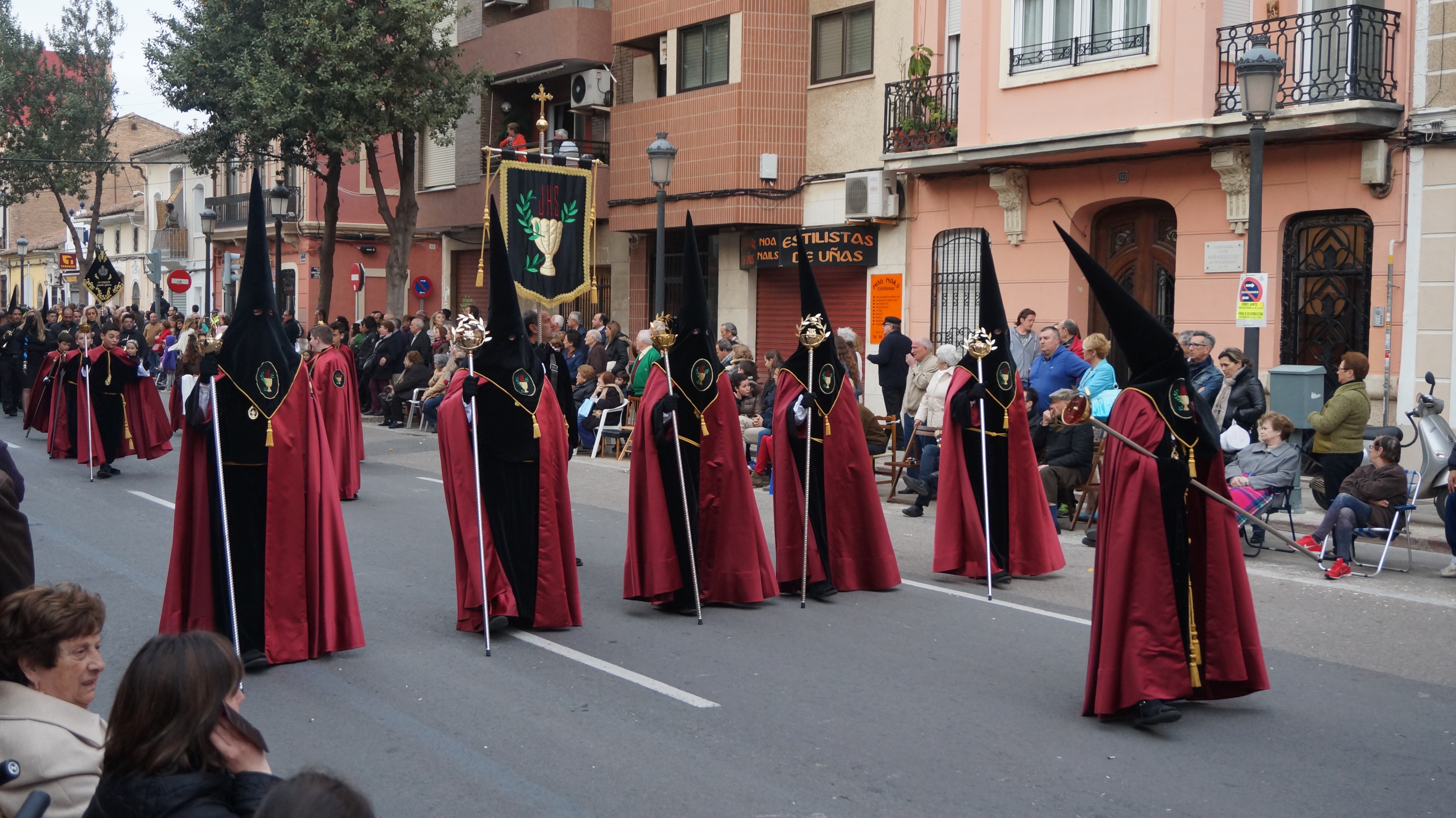
Holy Week in Valencia is linked with the sun, the sea and the beach. During this season, which is the prelude to summer, the religious atmosphere merges with the festivities in a Holy Week that is different to what can be found in other parts of Spain.
Although it has points in common with other places in Spain, the Semana Santa Marinera in Valencia is rooted in tradition in the seaside neighbourhoods, such as Cabanyal, Canyamelar and Grau. These neighbourhoods have managed to maintain their identity over the years. It is there where the fishermen’s guilds traditionally grouped together in brotherhoods to parade in procession.
Still with the echo of the Fallas in the memory, Valencia is preparing these days for the Semana Santa (Holy Week) of which we would like to highlight some aspects:
Sábado de Gloria.
At midnight on Saturday night is when the bells announce the Resurrection of Christ. This act is celebrated in a special way in Valencia, with what is called “la trencà dels perols”. It is a tradition with great symbolism as it represents the breaking with the past and the old and blessing the new. This is why the act is staged by breaking old earthenware pots, crockery or casseroles filled with water.
Penitentes.
There are almost fifty confraternities and brotherhoods in the seaside districts. Each one of them is dedicated to an image related to the Passion, Death and Resurrection of Christ. These brotherhoods go out in procession venerating the images, covered with large hoods, or parading as Roman troops or crusader soldiers, depending on the brotherhood and its veneration.
These penitents have nothing to do with the Ku Klux Klan, with which people who are not familiar with this Easter tradition, sometimes compare them or even think they have some kind of connection. The capirotes, as the cone-shaped hats are called, originated in the 15th century. At that time, the Holy Inquisition placed these hats on people who had been condemned by the Holy Tribunal. A sambenito, i.e. a scapular, was also attached to the capirotes to distinguish the condemned.
This tradition is so important and deeply rooted in the Spanish culture that we have an expression related to the sambenito, such as “colgarle el sambenito a otro” (hang the sambenito on someone else). Here, as we can deduce, what we are expressing is that the fault is not ours, but that of another person. A very similar expression to “echarle el muerto a otro”, although this one has a different origin.
Returning to the capirotes, the original ones used by the Inquisition had drawings alluding to the crime committed or the punishment imposed. It was not until the 17th century that the brotherhoods decided to adopt this garment for the Nazarenes. In this case, the original meaning is distorted and renewed with the intention of bringing the penitent closer to heaven. In this way, the cloth that falls over the face and chest, known as capuz (hood), serves to protect the penitent’s identity.
Finally, the colour of the hood is related to each brotherhood and acquires a different symbolism depending on whether it is linked to purity, mourning or passion, in white, black or red respectively.

Nazarenos, Penitentes and Cofrades.
Although the roles of these three participants in the brotherhoods are intermingled and, in the end, they share their passion, there are some differences to be noted. Generally speaking, we are all Nazarenes, i.e. those who suffer injustice and who embrace the path of faith in Jesus. We understand that Jesus was the first of the Nazarenes condemned to die.
Penitents, on the other hand, are those who have something to make amendment for not observing one of the commandments. These penitents are the ones who normally walk in the processions with their heads and faces covered.
Finally, the cofrades are those people (also nazarens), who are affiliated to a brotherhood and who show their devotion and sacrifice by helping the brotherhood.
Vocabulary of Holy Week.
In order to understand and appreciate every aspect of the Holy Week, it is interesting to consider some of the words that are part of this special week for Catholics.
Acólito: The altar boys in charge of carrying the incense and candles in the processions.
Cíngulo: This is the name given to the cord that is attached to the habit of the penitents and Nazarenes.
Cirio: This is the large wax candle carried in the procession.
Costaleros: The bearers of the images.
Cortejo: This is the penitence carried out in procession by the brotherhood.
Estandarte: This is the insignia in the shape of a cross, which is also topped by a cross and which is embroidered with the brotherhood’s emblems.
Hermandad: An association of believers and devotees of an image.
Incensario: A small brazier in which incense is burnt and which is used by some brotherhoods in processions.
Easter cakes.

All festivities, in any corner of Spain, are always associated with some kind of food, usually cakes. In Valencia there are two typical cakes that are usually eaten on Easter Monday:
Panquemado: Is a sponge cake with a very toasted exterior. This dark exterior is what gives it the name of pan quemado (burnt bread). If you want to enjoy this famous cake, don’t hesitate to go to one of the city’s bakeries and have it with a good hot chocolate.
La Mona de Pascua: This is undoubtedly the most typical cake of these dates. It has the same ingredients as the panquemado, but with different shapes depending on the master baker and usually includes a boiled egg in the middle. The Mona de Pascua for children, for instance, has a chocolate egg instead and is in the shape of an animal.
If you want to see the processions of Semana Santa Marinera up close, you will find the processions calendar by clicking on the link below.
https://www.semanasantamarinera.org/programa-de-actos/




